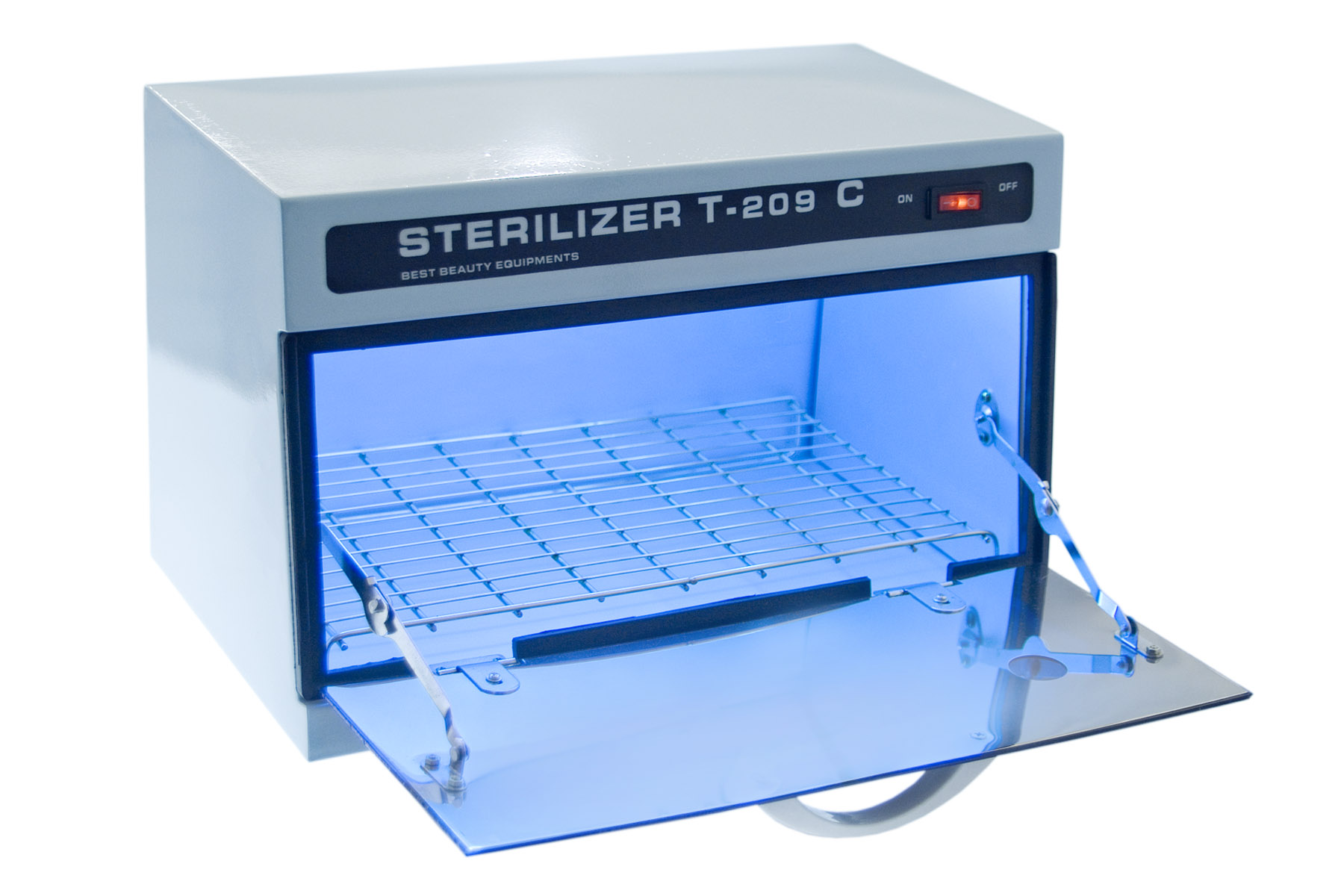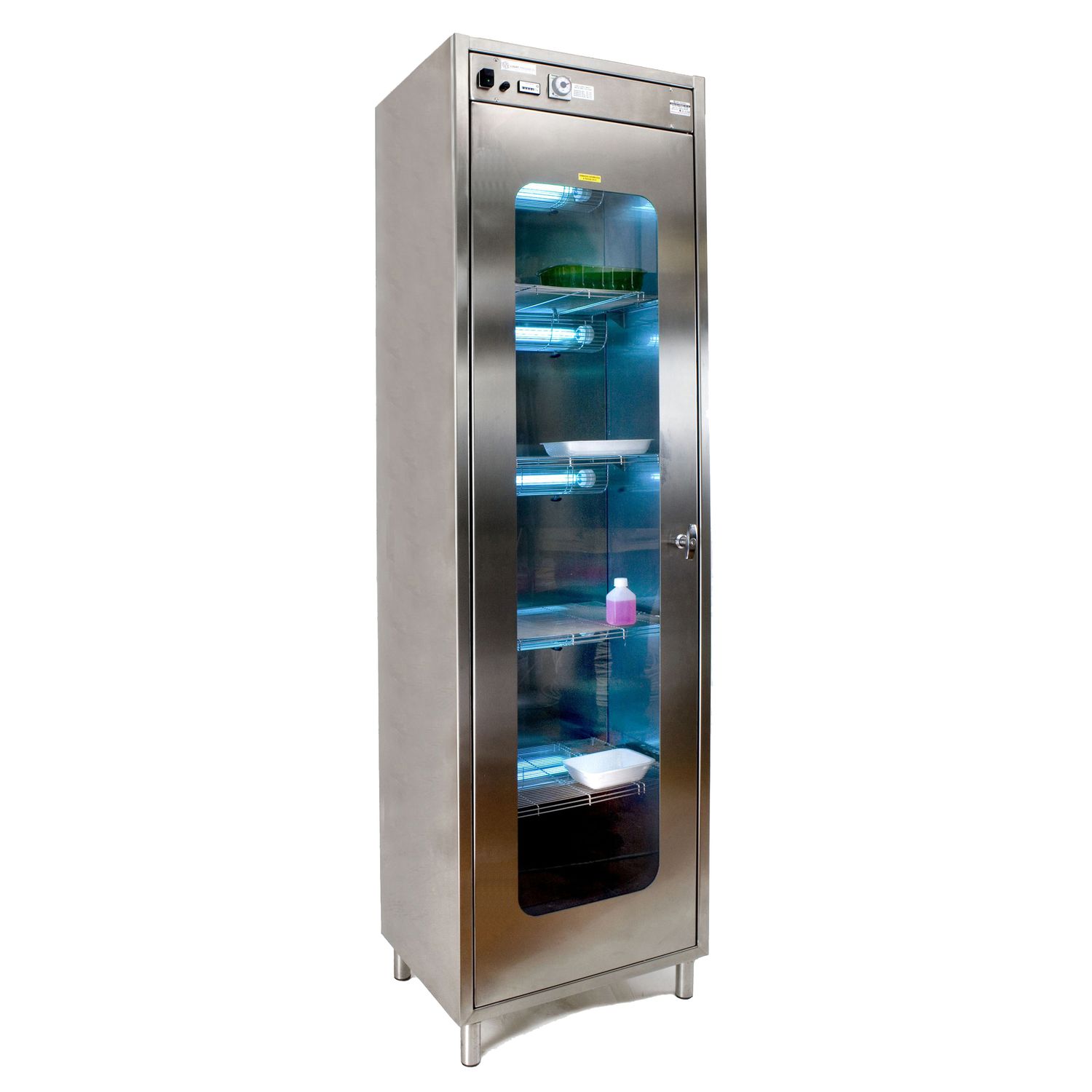Effective UV Sterilization Techniques and Safety Protocols

Harnessing the power of ultraviolet (UV-C) light for sterilization offers a powerful tool for disinfecting various items, but understanding the optimal techniques and safety measures is paramount for effective and safe usage. Improper handling can lead to equipment damage or even health risks. This section delves into the specifics of achieving effective sterilization while mitigating potential hazards.
Optimal UV Exposure Times for Effective Sterilization, Diy uv sterilizer cabinet
The effectiveness of UV-C sterilization hinges on the intensity of the UV-C light and the duration of exposure. Different materials and microorganisms require varying exposure times to achieve complete sterilization. Longer exposure times generally lead to more effective sterilization, but excessive exposure can damage certain materials. The following table provides examples of recommended exposure times, but these are guidelines and may need adjustments based on the specific UV-C lamp’s intensity and the cleanliness of the items being sterilized. Always err on the side of caution and use a longer exposure time if unsure.
| Item | Recommended UV-C Exposure Time (minutes) |
|---|---|
| Smartphone | 5-10 |
| Kitchen Utensils (metal) | 5-7 |
| Kitchen Utensils (plastic) | 3-5 |
| Small Tools | 5-10 |
| Baby Bottles (plastic) | 3-5 |
Safety Precautions When Working with UV-C Lamps
UV-C light, while effective at sterilization, poses significant risks to human health. Direct exposure can cause damage to the eyes and skin, leading to burns, cataracts, and skin cancer. Therefore, stringent safety precautions must always be followed.
Diy uv sterilizer cabinet – The following safety measures are crucial when using UV-C lamps:
- Always wear appropriate personal protective equipment (PPE), including UV-blocking safety glasses and gloves.
- Never look directly at a UV-C lamp, even for a brief moment.
- Ensure the UV-C lamp is enclosed within a properly designed and shielded cabinet to prevent accidental exposure.
- Never operate the UV-C lamp in an occupied room. Always ensure the area is completely empty before turning on the lamp.
- Follow the manufacturer’s instructions carefully for the operation and maintenance of the UV-C lamp and sterilizer.
- Properly dispose of used UV-C lamps according to local regulations, as they contain hazardous materials.
Material Suitability for UV-C Sterilization
Not all materials react the same to UV-C light. Some materials are highly resistant and benefit from sterilization, while others can be damaged or degraded by prolonged exposure. The following table Artikels the suitability of various materials for UV-C sterilization.
| Material Type | Suitability |
|---|---|
| Stainless Steel | Highly Suitable |
| Glass | Suitable |
| Hard Plastics (Polycarbonate, etc.) | Generally Suitable (with limited exposure) |
| Soft Plastics (some types) | Unsuitable (may degrade) |
| Wood | Unsuitable (may discolor or damage) |
| Certain fabrics | Unsuitable (may fade or damage) |
Calculating UV-C Dosage
The required UV-C dosage for effective sterilization is determined by the product of the lamp’s intensity (measured in µW/cm²) and the exposure time (in seconds). The formula is:
Dosage (µJ/cm²) = Intensity (µW/cm²) x Time (seconds)
For example, if a lamp has an intensity of 100 µW/cm² and an item is exposed for 300 seconds (5 minutes), the dosage would be:
Dosage = 100 µW/cm² x 300 seconds = 30,000 µJ/cm²
The required dosage varies depending on the target microorganism and the desired level of sterilization. Consult relevant scientific literature or guidelines for specific dosage requirements for different applications. Remember that the intensity of a UV-C lamp diminishes over time, so regular calibration and replacement are essential to maintain effective sterilization.
Advanced DIY UV Sterilizer Cabinet Features and Enhancements

Building upon a basic UV sterilizer cabinet, incorporating advanced features significantly enhances its effectiveness and usability. This section details several upgrades that can transform your DIY project from functional to truly sophisticated.
Integrating a Timer or Automatic Shutoff Mechanism
A crucial safety and efficiency enhancement is the addition of an automatic shutoff mechanism. Prolonged exposure to UV-C light can damage materials and pose health risks. A simple timer circuit using a 555 timer IC provides a cost-effective solution. The 555 timer, configured as a monostable multivibrator, can be triggered by a switch and will provide a timed output pulse to control a relay that switches the UV lamp on and off.
The circuit would consist of a power supply, a push-button switch to initiate the timer, the 555 timer IC with appropriate resistors and capacitors to set the desired sterilization time, and a relay to switch the high-voltage UV lamp circuit. The relay’s contacts should be rated to handle the lamp’s current and voltage. The timing can be adjusted by changing the values of the resistors and capacitors in the 555 timer circuit. Detailed schematics for this circuit are readily available online. For safety, ensure the high-voltage portion of the circuit is properly insulated and enclosed.
Improving the Reflectivity of the Cabinet’s Interior
Maximizing UV exposure within the cabinet is paramount for effective sterilization. The interior surfaces should be highly reflective to bounce UV-C rays and ensure even distribution throughout the chamber. Several materials excel at this:
- Highly polished aluminum: Offers excellent reflectivity and is relatively easy to work with. Consider using aluminum sheet metal for the cabinet’s interior walls.
- Mirror-finish stainless steel: Provides superior reflectivity compared to aluminum but is more expensive and challenging to fabricate.
- Specular reflective paint: Specialized paints formulated for high UV reflectivity are available, offering a more affordable option compared to metal. However, the reflectivity might degrade over time.
Careful attention to the surface finish is critical. Any imperfections or scratches will reduce reflectivity and compromise sterilization effectiveness. The chosen material should be thoroughly cleaned before assembly to ensure optimal performance.
Comparison of Different Cabinet Designs
Various designs offer different trade-offs between effectiveness, cost, and ease of construction.
| Design | Sterilization Effectiveness | Cost | Ease of Construction |
|---|---|---|---|
| Simple box design (wood/plastic) | Moderate (dependent on reflectivity) | Low | Easy |
| Aluminum-lined box design | High | Medium | Medium |
| Stainless steel chamber with reflective baffles | Very High | High | Difficult |
The choice depends on your budget, skills, and desired level of sterilization performance. A simple box design is ideal for beginners, while more complex designs are suitable for those with experience in metalworking or electronics.
A Step-by-Step Guide to Building a DIY UV Sterilizer Cabinet
This guide details the construction of a simple, yet effective, UV sterilizer cabinet. Remember, safety is paramount.
1. Planning and Design: Determine the cabinet’s dimensions based on the items you intend to sterilize. Sketch a detailed plan, including the placement of the UV lamp, ventilation, and any additional features.
2. Material Selection: Choose appropriate materials for the cabinet’s construction. Wood or plastic are suitable for a basic design, while aluminum or stainless steel are preferred for superior reflectivity and durability. Ensure the materials are compatible with UV-C radiation.
3. Cabinet Assembly: Construct the cabinet according to your design. If using wood or plastic, ensure all joints are secure and sealed to prevent leakage of UV-C radiation. If using metal, proper welding or riveting techniques are necessary.
4. UV Lamp Installation: Securely mount the UV-C lamp inside the cabinet. Ensure proper wiring and electrical connections. Use a timer or automatic shutoff mechanism for safety.
5. Interior Finishing: Line the interior with a highly reflective material, such as polished aluminum sheet or specialized reflective paint. Ensure a smooth, even surface to maximize reflectivity.
6. Testing and Calibration: After assembly, test the cabinet’s functionality. Use a UV meter to verify the intensity of UV-C radiation within the chamber. Adjust the lamp placement or reflectivity if necessary.
Always wear appropriate personal protective equipment (PPE), including UV-protective eyewear and gloves, when working with UV-C lamps and the assembled cabinet. Never look directly at the UV-C lamp.
UV-C radiation is harmful to skin and eyes. Ensure proper ventilation to prevent ozone buildup.
Always follow the manufacturer’s instructions for the UV-C lamp.
